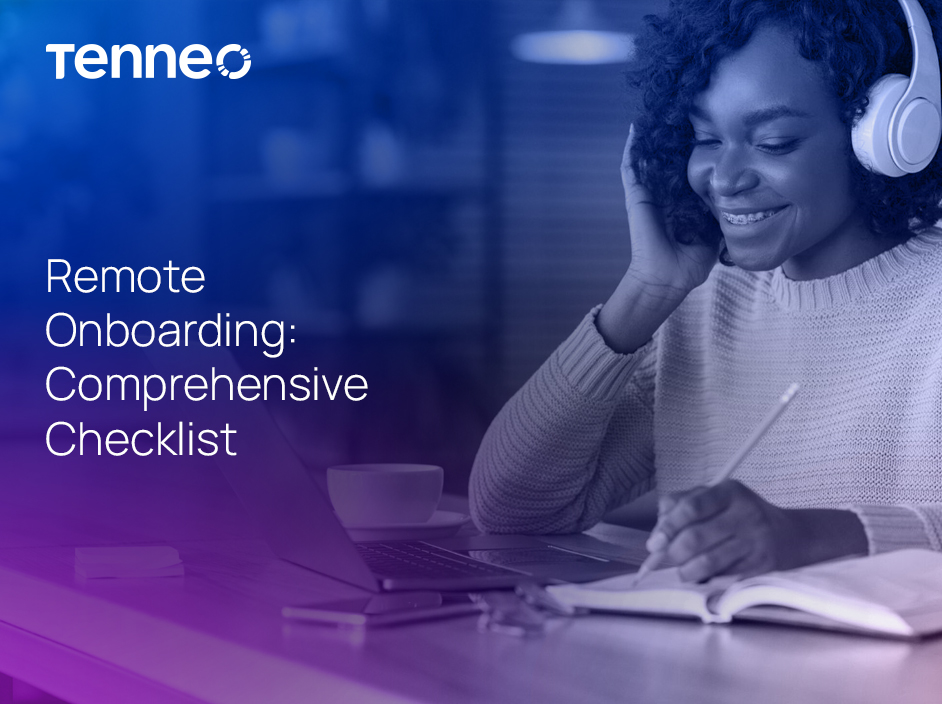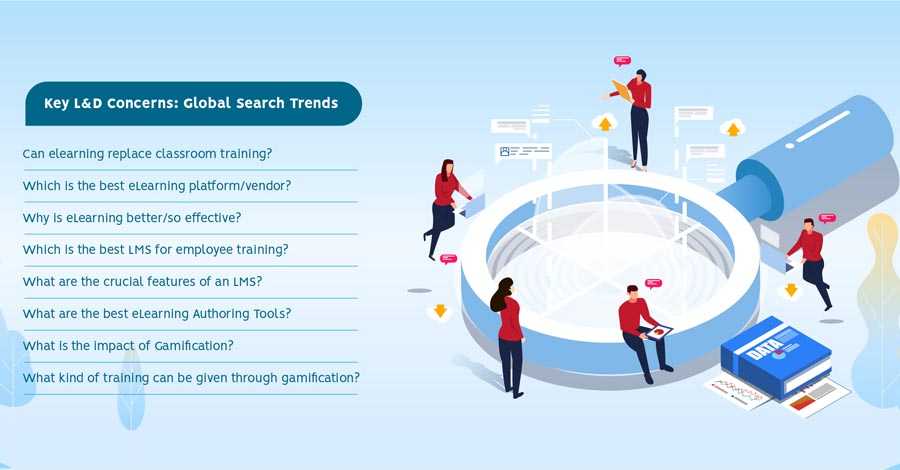
Key L&D Concerns in the Auto Industry: Global Search Trends
May 31, 2023
Remote Onboarding: Comprehensive Checklist
May 31, 2023
Key L&D Concerns in the Auto Industry: Global Search Trends
May 31, 2023
Remote Onboarding: Comprehensive Checklist
May 31, 2023Blog - 22 Mar 2023 | 6 Min
Key L&D Concerns in the Aviation Industry: Global Search Trends

At Tenneo (formerly Tenneo (formerly G-Cube LMS) LMS), we regularly study LMS and eLearning trends, usage patterns, customer queries etc to try and identify problem areas, evolution of needs and how to better our product and services. In that spirit, we looked at what people, particularly L&D Heads, are looking for now. As the global COVID disruption extends into its 6th month, organizations are coming to grips with what the new normal will mean for them. From an operations perspective they are busy looking for means to normalize and to immunize against future recurrence. Looking at search trends across the internet we identified the following key concerns:

eLearning
More than just the current buzzword, eLearning has long been an advocated practice to supplement classroom training. So what’s changed? Here are the questions being asked:
- Can elearning replace classroom training? Phrased in different ways, this is the fundamental question, most asked across all platforms. Depending on how the question is phrased, it either questions the premise itself (‘Can …?”) or asks for methodology (“How can…?), or debates the alternative (“eLearning Vs. Classroom training”). Given the present situation globally, where the majority of the workforce has been relegated to working from home, classroom training is not even an option! Compounding that is the urgent need to train employees on the newer methods of engaging within teams, with customers and ways of collaboration. This is an absolute must if operations are to normalize. eLearning has quickly become the go-to method and now the priority. This article is a deeper dive into the comparison between classroom training and eLearning.
- Which is the best eLearning platform/vendor? One size doesn’t fit all. In our decades of experience with clients, we have realized that no two clients have the same needs. It is through bespoke customization and tweaking that the perfect solution is arrived at. So what may be best for one client, may not work as well for the unique needs of the other. We have of course become richer, in expertise, for it! Before looking for the best platform/provider, know your needs, problem areas, and challenges well. Here’s a quick read on what to consider when selecting an eLearning vendor.
- Why is eLearning better/so effective? Other than the obvious cost advantage, there are others such as standardization of training content and delivery, improved retention and personalized learning that help tip the scale in favor of eLearning. The last one particularly is in fact unique to it. Robust LMSs also personalize the learning journey by serving learning suggestions based on performance and learning history. KPI and skill gap-based training suggestions are unique and finely tuned to each learner, making the training bespoke and hence much more relevant. A constant requirement in the Aviation industry, training caters to critical compliance training, requires frequent updates and multiple integrations including roster management and must support a globally dispersed workforce. Take a look at the benefits of performance management software for corporate training and why corporates choose Learning Performance Platforms.
LMS
Learning Management Suites today have gone above and beyond the initial call of duty which was to simply deliver passive eLearning. Robust LMSs give learners and organizations incredible freedom, flexibility and personalization to learn and teach. Multi-media content in long and short formats, gamification modules, simulations, AR and VR integrations etc make content much more engaging. The ability to quickly update content through authoring tools makes it easily scalable; social and collaborative learning elements encourage team building, motivation and eventually performance. While the importance of the LMS is well understood, here’s what L&D chiefs are particularly asking:
- Which is the best LMS for Aviation Industry? As discussed above about choosing platform/vendor, the best LMS will be one that fits your needs best. However, some of the key things to keep in mind are whether it is geared for your industry vertical; if it caters to your ever growing needs – is it scalable; research the success it has received with other clients and industry recognition; can it seamlessly integrate with other essential systems such as roster management software, CRM etc.; check for industry compliance and finally, how customizable is it. The most robust LMSs can either easily integrate with experience and performance platforms, or come equipped with both. These help personalize the learner’s journey through suggestions, as discussed above. A robust Aviation-specific LMS will help reduce non-compliance with features such as certificate management, competency cards and audit mechanisms. Intuitive TNA and integration with roster management software assists training scheduling. It creates one-stop solution using in-built survey, OJE forms, feedback features and ready APIs for integrating with rostering, MRO systems and crew management systems. It removes manual interventions through automated training workflows, attendance management through bio-metric integration, scheduled reports, interactive dashboards and exception alerts. It also decreases admin overheads through App based training administration, exception handling capabilities like relegation and back dated training creation. Here are some use case for a successful LMS implementation for a major Aviation client and compliance training delivery.
- What are the crucial features of an LMS? This depends on the needs the LMS is meeting. Basic features include easy navigation, scalability, mobile compatibility and smart UI. If training engagement and retention are to be increased, it must support multi-media content, gamification etc. If performance analysis of each employee is a critical driver, an integrated performance platform would be a key feature. Assess the organization’s most important needs to arrive at the features that would be crucial to you. But as a base to build from, an LMS must have the following: SCORM & xAPI Compliance, Content Authoring capabilities, UI Personalization and Multi-lingual Support. Here are some features that boost engagement, performance and ROI.
- What are the best eLearning Authoring Tools? The best rapid authoring tool is the one that meets your immediate needs within timelines while maintaining cost efficiencies, can develop multi-format content, is easy to learn and use. When choosing a tool, consider the following – design flexibility and control, mobile compatibility, scalability, feedback mechanism, publishing speed, maintenance, ease of localization, integration and analytics. Full-service LMS providers have expertise and work with multiple authoring tools. Here’s a list of the best authoring tools in the market.
Gamification
This is one of the most popular ways to make training engaging, fun and retentive. Features such as leaderboards, badges, collaboration etc imbibe a spirit of healthy competition peers and builds team spirit, all the while imparting essential learning. As we go full throttle into a virtual training mode, this has become the go-to method for L&D leaders. Here are the specific areas they’re studying:
- What is the impact of Gamification? Gamification and game-based learning makes content interesting, fun and interactive. It increases collaboration, knowledge sharing and communication between peers. Finally, gamification relies on Microlearning. Bite-sized modules of training ensure thorough understanding of the subject matter. Here’s a deep dive into the benefits of gamification and the popular elements of gamification.
- What kind of training can be given through gamification? Virtually all training can be gamified. Identify training objectives and apply gamification wherever you need consistent engagement and/or assessment. Depending on which behaviors you want to influence or enforce, use gamification to re-iterate that. Focusing on positive reinforcement, build rewards to encourage the desired response. Here’s a quick read on the kinds of training that can be delivered through gamification.
Blended Learning
This approach combines classroom training with online learning. The blended style increases training flexibility by making it available anytime, anywhere, on any deice. This also increases its reach to those who may not be able to attend the entire training in a classroom setting. Multi-format, short modules make training engaging and completion easier.
When to Use Blended Learning? As with other training decisions, identifying business goals is a must-do first. Align training accordingly and relegate those to the online medium which either need to be addressed as short modules, can be self-paced, need to be conducted repeatedly but with minimal guidance, require collaboration, enforce behavior modification through repetition and/or those that can be made more engaging by changing format of by gamifying.
Here’s a discussion on how the blended approach complements traditional classroom learning.
Review the different combinations of blended learning to select the right one for you.
While we have picked only a few key topics, there has been considerable search in the L&D domain lately. We’d love to answer any of your queries, hear from you, and help you with any training challenge you might be facing. Do write in to us at blogs@gc-solutions.net or visit our website for more information.
Related services
Product Engineering



